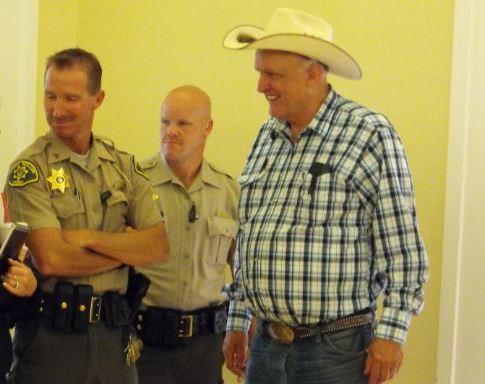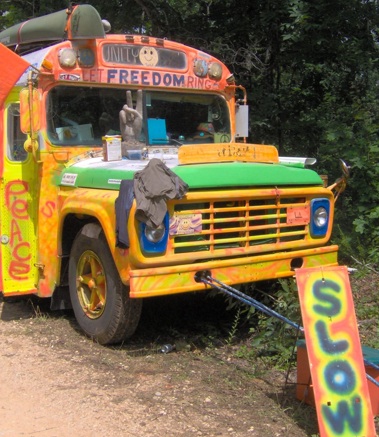One of the core principles of Montana Conservation Voters is the protection of our public lands as well as access to those public lands. At the state and federal level, MCV has vehemently opposed efforts to transfer or sell-off public lands to state or private ownership or even to study these misguided proposals. Such an effort would certainly lead to loss of access to pristine public lands and likely mismanagement by states who are inexperienced at multi-purpose land management.
 However, MCV proudly supports the National Bison Range Transfer and Restoration Act and supports the Range’s transfer to be held in trust by the U.S. Department of the Interior and managed by the Confederated Salish and Kootenai Tribes.
However, MCV proudly supports the National Bison Range Transfer and Restoration Act and supports the Range’s transfer to be held in trust by the U.S. Department of the Interior and managed by the Confederated Salish and Kootenai Tribes.
The restoration of the Range to the Tribes would right a historic wrong by returning land lying entirely within the reservation boundaries and provided for in the Hellgate Treaty of 1855 – land that the federal courts ruled to be an illegal taking from the Tribes. Restoration would continue the Tribes’ proven track record of responsibly managing lands while maintaining public access for the benefit of all Americans.
 The Tribes have established a tribal wilderness area, developed a grizzly management plan, restored endangered bull trout habitat, reintroduced the trumpeter swan, created wildlife corridors, and managed invasive species. The reservation includes half of Flathead Lake, one of the most popular recreation areas in the state that affects tribal and non-tribal interests alike. The Tribes have also worked in partnership with the U.S. Fish & Wildlife Service to develop the land use plan for the Range and have co-managed the Range and various waterfowl areas with USFWS.
The Tribes have established a tribal wilderness area, developed a grizzly management plan, restored endangered bull trout habitat, reintroduced the trumpeter swan, created wildlife corridors, and managed invasive species. The reservation includes half of Flathead Lake, one of the most popular recreation areas in the state that affects tribal and non-tribal interests alike. The Tribes have also worked in partnership with the U.S. Fish & Wildlife Service to develop the land use plan for the Range and have co-managed the Range and various waterfowl areas with USFWS.
This experience prompted a USFWS official to rank the Tribes’ wildlife program “among the best in tribal programs and as good as many state fish and wildlife agencies.”
 There can be no doubt that the Tribes have a proven record to manage the Range and are committed to maintaining public access so visitors can learn about the natural and cultural history of the bison as well as the Tribes and their history with the land over the millennia.
There can be no doubt that the Tribes have a proven record to manage the Range and are committed to maintaining public access so visitors can learn about the natural and cultural history of the bison as well as the Tribes and their history with the land over the millennia.
While supporters of the idea to transfer federal lands to the state control might point to this proposed transfer of the Range as an argument to transfer more lands to states, it is clear that the Montana Constitution and the U.S. Constitution make this is a unique circumstance.
Article I of the Montana Constitution declares “all lands owned or held by any Indian or Indian tribes shall remain under the absolute jurisdiction and control of the congress of the United States.” Article I, Section 7 of the U.S. Constitution states that, “The Congress shall have the power … to regulate Commerce … with the Indian Tribes.”
 The Range is currently under the jurisdiction of the USFWS within DOI and the transfer authorized by the Restoration Act simply moves jurisdiction to another part of DOI, the Bureau of Indian Affairs, so the land could be held in Trust for the Tribes. It is under the purview of Congress to take this action.
The Range is currently under the jurisdiction of the USFWS within DOI and the transfer authorized by the Restoration Act simply moves jurisdiction to another part of DOI, the Bureau of Indian Affairs, so the land could be held in Trust for the Tribes. It is under the purview of Congress to take this action.
Enactment of the National Bison Range Transfer and Restoration Act is an important step to expanding self-determination for the Tribes who have a proven record of managing lands and the Range. We are confident that the visitor experience, opportunities for wildlife viewing and taking in outstanding scenery will be much the same as it is today and even better in many ways.
MCV stands ready to help the Tribes bring attention and support to this important legislation and encourages other conservation-minded citizens and groups to do the same.


